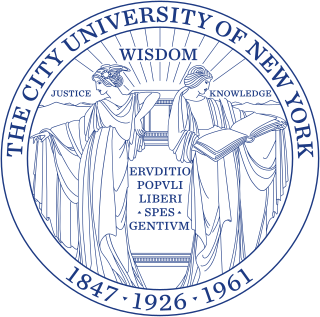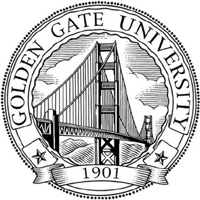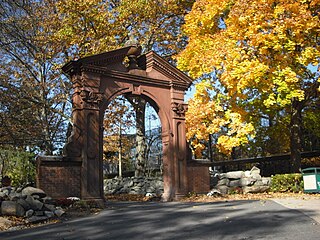This article needs to be updated.(July 2021) |
Ramapo College of New Jersey is a public undergraduate liberal arts college founded in 1969.
This article needs to be updated.(July 2021) |
Ramapo College of New Jersey is a public undergraduate liberal arts college founded in 1969.
Just prior to 1969, the New Jersey system of public higher education consisted of the state university, Rutgers, along with six teachers colleges. The rest of the state's college students sought their educations at a handful of medium-sized private institutions, Princeton University, or an out-of-state college or university. New Jersey had the highest rate of students leaving the state for their college education. [1]
The New Jersey Department of Education produced a report in 1962 recommending a massive expansion and retooling of the public higher education system. Opposition to "broad based" taxes such as a sales or income tax generally hindered greater efforts by the state to spend further sums on higher education. Richard J. Hughes ran for New Jersey governor in 1962 on a platform including among its proposal one to institute a broad-based tax and another to increase the capacity of public higher education. While in office, Hughes succeeded in implementing a sales tax and in passing the Higher Education Act, which, in conjunction with a bond issue approved by the voters, established a Department of Higher Education, a Board of Higher Education, and two new state colleges. State officials rewarded Bergen County legislators for their support of the Higher Education Act with a new college among their constituents. [2]
The board of trustees for the new state college in northern New Jersey assembled for the first time in February 1969. [3] The Department of Higher Education gave the Board much latitude in carrying out its responsibilities—namely, hiring a President, selecting a site, and choosing a basic model for their school. [4] The Department did make clear, however, that they favored an innovative, experimental college. [5] In June, the Board selected George Potter, a somewhat controversial administrator at the experimental Grand Valley State University in Michigan with a master's degree from Oxford University. [6] The search for space on which to establish the new campus met a number of challenges, including cost and negative reception in the communities it explored. [7] Eventually the college arranged to purchase the estate of the former Stephen Birch in Mahwah, New Jersey. [8] The board of trustees set the opening for the fall of 1971. [8]
The architects produced plans for an L-shaped, glass-walled facility, with connected spaces devoted to particular departments or divisions. The architects also recommended a building systems approach in construction to allow for rapid construction of the wings before the opening of the college. Potter would later regret this choice of construction in for its drawbacks in comfort and aesthetics. [9]
Potter took on a number of assistants to help through the planning stages of the college. One of them, Thomas Goss, a colleague of Potter's from Grand Valley State, would exert an outsize influence on the guiding principles and organization of the college. [10] From the beginning, the college made interdisciplinary education a priority and planned to accomplish much of its teaching through seminars, independent study, and experiential learning. [11] Potter and Goss, in effect, charted a middle course between those on the board of trustees who favored a largely traditional institution and those on the other hand who favored a far more radical approach. [12]
Of 3018 formal applications (2701 freshmen and 717 transfer students), Ramapo College accepted 1855 (1302 freshmen, or 57%, and 553 transfer students, or 77%). Of those admitted, 1186 left deposits with the school. Potter had planned for an enrollment of 800 students in the College's first year. [13]
Standards for admission set by the school were considerably relaxed during the course of recruitment. [13] More than half of the students came from Bergen county, and of those, roughly two-thirds came from the more affluent northern expanse. [14]
Classes began September 22, 1971. [15] At the time of the College's opening, five schools had established themselves.
Business and other professional programs did not yet exist as majors. The Institute of Management Science, the College name for the business program housed in the Division of Professional Institutes, had a few faculty teaching a few basic business courses and arranging for student field placements. [17]
Among the more distinctive features of Ramapo's undergraduate education, in addition to the persistent interdisciplinary organization, were the tutorial and the core of "Scopes and Methods" courses. The "tutorial" was in fact a series of courses, usually two credits, where faculty were to advise and direct the study of their students. The courses were taught in a small format and often covered some academic content. The tutorials, as established by the college, were fairly unstructured, and not all faculty and students were willing or able to create the bond between students and faculty the tutorial intended. The tutorial resulted in diverse and ultimately uneven experiences for students and faculty alike. [18] Scopes and Methods courses were, on the other hand, an introduction to the history of a discipline and its methodology. [19] Many faculty members, though, felt uncomfortable and unprepared with the emphasis teaching their own work and methodology to their students. [20]
The student environment the College had been planned for was changing significantly in the years follow its founding. Student demands for career-oriented programs increased, demands were made for a business school, state funding was cut, and demographic changes resulted in decreasing levels of college-aged students entering institutions of higher education. [21]
Financial difficulties, the formation of a business school, and dropping enrollment, the faculty and the Dean of Schools, Teo Halpern, lead a major reorganization of the College's composite schools.
A number of faculty also transferred into the new School of Administration and Business, created by mandate of the board of trustees in the wake of sustained controversy and resistance on the part of much of the non-business faculty. [23]
In addition, financial difficulties put the college in a position to reconsider the resource-intensive structure of general education and investigate effective new means to give students a liberal arts foundation. Many reports were produced by the faculty making recommendations for changes, some fairly extensive, but the debate was not yet over. [24] Action would come in the late 1980s and throughout the 1990s under a new administration.
President Potter seemed unable to reconcile his earlier innovative ideas with changing student demands and a declining fiscal outlook. He did not produce "effective" results in campaigns to produce private contributions, and his formal long-term planning report was far behind schedule. In addition, his administration was pressured by the Department of Higher Education to execute several faculty cuts which proved very unpopular, and his administration's handling of a subordinate's sexual harassment charges and subsequent lawsuit was inept. Potter's increasing conflicts with the Department of Higher Education lead the Department to put pressure on the Board of Trustees to remove Potter. Board action seemed inevitable, as the Department was implicitly withholding funds for a desperately needed housing project. Potter resigned in February 1984. [25]
The board of trustees had already made arrangements for the aftermath of Potter's departure. Sidney Silverman, a retired president of Bergen Community College, stepped in as interim president. [26] Silverman took action to improve relations in the college community with the administration. Additionally, Silverman worked to comply with mandates from the Department of Higher Education regarding the College's finances. One of Silverman's proposal was to reduce the credit awarded for most classes from four to three credits. Under a three credit system, students would take more classes and professors would teach more courses on the same pay. The College, in turn, would save money by being able to reduce the number of adjunct professors. While the faculty bitterly protested this measure, the Board of Trustees, under pressure from the Department, felt it had no choice but to implement it. [27]
During the meeting of the Faculty Assembly on April 24, 1985, the faculty voted to approve a new structure in general education, to be phased in over the next several years. The new structure mandated courses to ensure basic skills in freshman and to provide a liberal arts foundation to students on an all-college basis. This was to be accomplished through a series of freshman courses continued with several upper-level courses. While there was much to be left defined and room for revision, this basic structure would guide Ramapo general education for the next twenty-five years. [28]
In the spring of 1985, the search committee for the new president ended and the Board of Trustees hired Robert Scott. Scott had been Director of Academic Affairs at the Indiana Commission for Higher Education. [29] Scott would continue to serve the college through the end of the 1990s, presiding over a period of rising tuition, increased competition among colleges for students, and increased autonomy from the state. [30] That being said, under Scott's tenure, Ramapo dramatically expanded its residential facilities, improved academic facilities, and increased student enrollment. [31] [32]

The City University of New York is the public university system of New York City. It is the largest urban university system in the United States, comprising 25 campuses: eleven senior colleges, seven community colleges, and seven professional institutions. While its constituent colleges date back as far as 1847, CUNY was established in 1961. The university enrolls more than 275,000 students and counts thirteen Nobel Prize winners and twenty-four MacArthur Fellows among its alumni.

The California State University is a public university system in California. With 23 campuses and eight off-campus centers enrolling 485,550 students with 55,909 faculty and staff, CSU is the largest public university system in the United States. It is one of three public higher education systems in the state, with the other two being the University of California system and the California Community Colleges. The CSU system is incorporated as The Trustees of the California State University. The CSU system headquarters is located in Long Beach, California.

Rutgers University, officially Rutgers, The State University of New Jersey, is a public land-grant research university consisting of four campuses in New Jersey. Chartered in 1766, Rutgers was originally called Queen's College, and was affiliated with the Dutch Reformed Church. It is the eighth-oldest college in the United States, the second-oldest in New Jersey after Princeton University, and one of nine U.S. colonial colleges that were chartered before the American Revolution.

Drew University is a private university in Madison, New Jersey. Drew has been nicknamed the "University in the Forest" because of its wooded 186-acre (75 ha) campus. As of fall 2020, more than 2,200 students were pursuing degrees at the university's three schools.

Kean University is a public university in Union and Hillside, New Jersey. It is part of New Jersey's public system of higher education.
New Jersey City University (NJCU) is a public university in Jersey City, New Jersey. Originally chartered in 1927, and known as Jersey City State College for 40 years of its history, New Jersey City University consists of the School of Business, College of Arts and Sciences, College of Education, and College of Professional Studies. NJCU enrolls over 8,500 students and is part of New Jersey's public system of higher education.

Golden Gate University is a private university in San Francisco, California. Founded in 1901, GGU specializes in educating professionals through its schools of law, business, taxation, technology, accounting, psychology, and undergraduate studies. The university offers 8 undergraduate degrees and 17 graduate degree progams.
Maastricht University is a public research university in Maastricht, Netherlands. Founded in 1976, it is the second youngest of the thirteen Dutch universities.
Rockland Community College (RCC) is a public community college in the town of Ramapo, New York in Rockland County. It is part of the State University of New York. The college, established in 1959, became the 18th community college to join the SUNY system. The college offers 51 programs and offers associate degrees and certificates. Additionally, students can earn other degrees, including Bachelor of Arts, Bachelor of Science, and Master of Arts in the arts and sciences, Doctoral Program in Executive Leadership (EdD), technology, and health professions while attending classes at Rockland through articulation programs with four-year schools. The current enrollment is 6,859 students.

Joseph V. Doria Jr. is an American Democratic Party politician, who served as Commissioner of the New Jersey Department of Community Affairs in the cabinet of Governor Jon Corzine from 2007 until his resignation in July 2009. He is a former Speaker of the New Jersey General Assembly, State Senator for the 31st Legislative District, and a former Mayor of Bayonne, a position he held from July 1998 to October 2007.

Sussex County Community College (SCCC) is a public community college in the town of Newton in Sussex County, New Jersey. It is accredited by the Middle States Commission on Higher Education and several of its programs are further accredited or approved by state government agencies and national occupational standards associations.
The Ramapo Indian Hills Regional High School District is a comprehensive regional public school district consisting of two four-year public high schools serving students in ninth through twelfth grades from Franklin Lakes, Oakland, and Wyckoff, three suburban communities in Bergen County, New Jersey, United States. Students entering the district as freshmen have the option to attend either of the district's high schools, regardless of their residence, subject to a choice made during eighth grade.

An-Najah National University is a Palestinian non-governmental public university governed by a board of trustees. It is located in Nablus, in the northern West Bank. The university has 22,000 students and 300 professors in 19 faculties. It is the largest university in the State of Palestine.

Rowan College of South Jersey (RCSJ) is a public community college with two campuses in the South Jersey region of New Jersey. The first, Gloucester Main Campus, is in Sewell. The second, Cumberland Branch Campus, is in both Vineland and Millville. The college was established in 1966 as Gloucester County College (GCC). In 2014, the college changed its name to Rowan College of Gloucester County when Rowan University and Gloucester County College entered into a partnership. The college then expanded in 2019, combining Rowan College at Gloucester County (RCGC) and Cumberland County College to become Rowan College of South Jersey.
The Oakland Public Schools is a comprehensive community public school district serving students in kindergarten through eighth grade from the borough of Oakland in Bergen County, New Jersey, United States.
The Wyckoff School District is a community public school district, serving students in pre-kindergarten through eighth grade from Wyckoff in Bergen County, New Jersey, United States.
The Franklin Lakes Public Schools are a community public school district serving students in pre-kindergarten through eighth grade from Franklin Lakes, in Bergen County, New Jersey, United States.

Ramapo College of New Jersey (RCNJ) is a public liberal arts college in Mahwah, New Jersey. It is part of New Jersey's public system of higher education. As of the fall 2021 semester, there were a total of 5,732 students enrolled at the college, including 576 graduate students and 11 doctorate students.

American University of Technology (AUT), is a private university established in Lebanon. It was founded in 1998 by Ghada Hinain near Byblos. The university is directed by an appointed Board of Trustees.

Morton Owen Schapiro is an American economist who served as the 16th president of Northwestern University from 2009 to 2022.